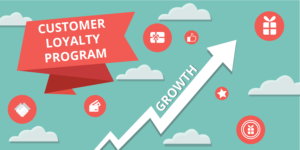How to Use 10 Behavioral Segmentation Methods to Understand Your Customers?

Behavioral segmentation is the method in marketing that involves dividing clients into segments based on how they interacted with a website or brand. By dividing your customers into different segments based on their behaviors, you can identify patterns, preferences, and needs that will help you create more effective marketing campaigns.
In this article, I will explore 10 behavioral segmentation methods that you can employ to get a clear understanding of your customers.
Method 1: Purchase behavior
Segment your customers according to their purchase behavior, including the frequency, value, and kind of products they buy. You can identify your most loyal clients as a result, and send them tailored marketing messages.
Method 2: Engagement behavior
Segment your customers based on their level of engagement with your brand, such as how often they visit your website, open your emails, or follow you on social media. As a result, it is easier for you to identify and reward your most loyal clients.
Method 3: Demographic behavior
Segment your clients depending on demographic factors including age, gender, level of education, and income. This can help you identify trends and patterns in your customer base and tailor your marketing messages accordingly.
Method 4: Psychographic behavior
Segment your customers according to their personality traits, values, and lifestyle choices. This can assist you in creating more targeted marketing strategies that connect with your target audience on a deeper level.
Method 5: Behavioral occasion segmentation
Segment your customers based on specific occasions, such as holidays, special events, or life milestones. This assists in creating timely and appropriate marketing campaigns that have a higher conversion rate.
Method 6: Geographical behavior
Segment your clients depending on their geo location including country, region, or city. This can help you identify trends and preferences in different markets and tailor your marketing strategies accordingly.
Method 7: Usage behavior
Segment your customers based on their usage behavior, such as how often they use your product, how much they use it, and what features they use most. This can help you identify areas for improvement in your product and create targeted marketing messages that highlight its unique benefits.
Method 8: Loyalty behavior
Segment your customers based on their loyalty to your brand, such as how long they have been a customer, how often they make purchases, and how likely they are to recommend your brand to others. This can help you identify your most valuable customers and create targeted marketing messages that incentivize them to stay loyal.
Method 9: Attitude behavior
Segment your customers based on their attitudes and opinions about your brand, your products, and your industry. This leads to find out areas where you may need to improve your brand value and create effective marketing campaigns that address these issues.
Method 10: Benefit behavior
Segment customers according to the benefits they expect from your product or service, including convenience, cost-effectiveness or quality. This can help you create marketing messages that highlight the specific benefits that are most important to your customers.
By using these 10 behavioral segmentation methods, you can gain a deeper understanding of your customers and create more effective marketing campaigns that resonate with them on a personal level. Remember to constantly analyze your data and adjust your segmentation strategies accordingly to ensure that you are always meeting the needs and preferences of your customers.
10 Tips on How to Segment Customers by Behavior
By dividing your clients into various segments depending on their behaviors, you can identify patterns, preferences, and needs that will help you create more powerful marketing campaigns.
Here are 10 tips to segment customers by behavior:
- Define your customer personas
Before you can segment your customers by behavior, you need to have a clear understanding of who your customers are. Define your customer personas based on factors such as age, gender, income level, and interests. This will help you create targeted messaging that speaks to the unique needs and preferences of each customer segment.
- Analyze your customer data
To identify different customer segments, you need to analyze your customer data. Look at metrics such as purchase behavior, engagement behavior, demographic information, and psychographic information to identify trends and patterns in your customer base.
- Use multiple segmentation methods
To gain a complete picture of your customer base, it’s important to use multiple segmentation methods. Combine purchase behavior segmentation with engagement behavior segmentation, for example, to identify your most loyal and valuable customers.
- Prioritize your customer segments
Once you have identified your different customer segments, prioritize them based on factors such as profitability and growth potential. This will help you focus your marketing efforts on the segments that are most likely to drive revenue and growth for your business.
- Create personalized messaging
To effectively reach your different customer segments, you need to create personalized messaging that speaks to their unique needs and preferences. Use language and imagery that resonates with each segment, and tailor messaging to their interests and behaviors.
- Leverage automation
Automated marketing tools such as email marketing software and marketing automation platforms can help you deliver personalized messaging at scale. Use these tools to automate your marketing campaigns and deliver targeted messaging to your different customer segments.
- Test and refine your segmentation strategies
To ensure that your segmentation strategies are effective, you need to constantly test and refine them. Use the A/B testing concept to try different messaging and offers, and then examine the results to determine what is most effective for each consumer segment.
- Improve your segmentation techniques by implementing customer feedback
Listening to customer feedback can help you refine your segmentation strategies and identify areas for improvement. Collect insights from your customers using feedback forms, and surveys. Later, improve segmentation plans using this feedback.
- Stay updated with customer trends and behaviors
Customer behaviors and preferences might vary, so it’s important to stay active on current trends. Monitor customer behavior on social media, track customer engagement with your marketing campaigns, and stay up-to-date with industry research to ensure that you are always using the most effective segmentation strategies.
- Continuously optimize your campaigns
To ensure that your campaigns are effective, you need to continuously optimize them based on customer feedback and data analysis. Use analytics tools to monitor campaign performance, and make adjustments to your segmentation strategies and messaging as needed.
Conclusion
Segmenting customers by behavior is a powerful marketing technique that can help you understand your customers and deliver targeted messaging that resonates with them. By defining your customer personas, analyzing your customer data, using multiple segmentation methods, and creating personalized messaging, you can effectively reach your different customer segments and drive revenue and growth for your business.
Don’t forget to continuously test, refine, and optimize your segmentation strategies to ensure that they are always delivering maximum impact.






